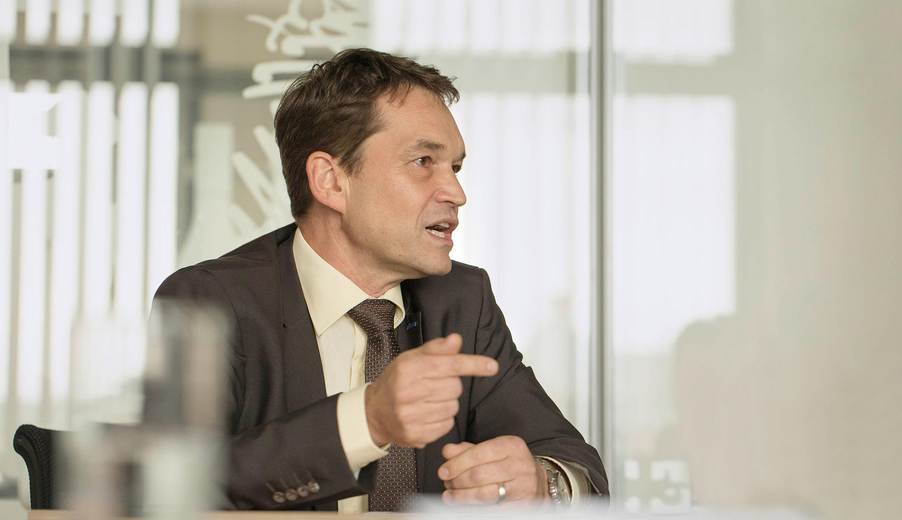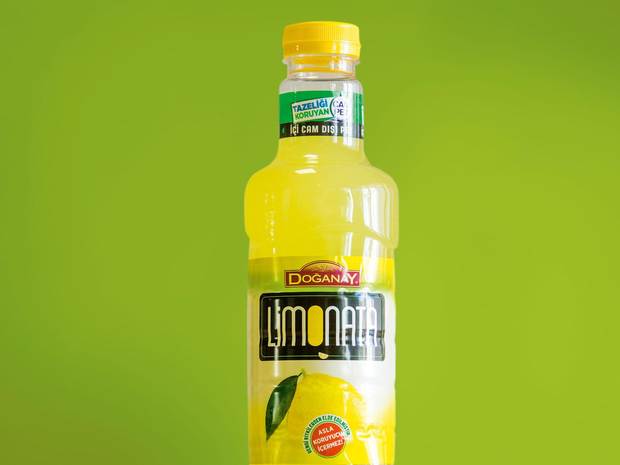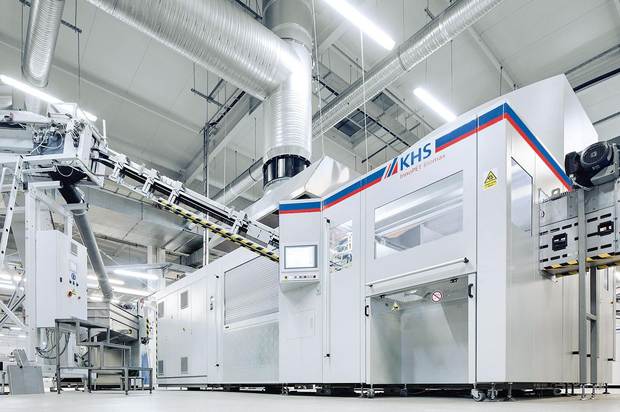At around 45 million square kilometers in size Asia is the largest continent on the planet. It’s home to approximately four billion people – that’s about 60% of the world’s entire population. Asia also boasts a number of other superlatives in addition to the aforementioned. For example, it has the world’s highest mountain in Mount Everest and the deepest and oldest freshwater lake with Lake Baikal. Asia is also the continent with the greatest abundance of natural resources, the highest differences in temperature, the longest coastline and the most time zones. As far as its economic development is concerned, there are still some huge discrepancies between the individual regions. While Japan is one of the richest countries in the world, Bangladesh is one of the poorest. Frank Hollmann, head of Market Zone Asia-Pacific for KHS GmbH since 2013, considers his area of business to be a very exciting market – because it’s so strongly polarized – which is characterized by people who are open-minded, friendly and diligent. In the following interview Hollmann talks about the challenges and chances the Asia-Pacific region presents to the beverage industry – and thus also to KHS.
KHS competence: Mr. Hollmann, how is KHS positioned in the Asia-Pacific market zone?
Frank Hollmann: The Asia-Pacific market zone is divided into the four regional centers of China, Southeast Asia, India and Australia and has a total of 16 sales and service centers. Three of these are in China, four in India and one in each of the countries of Singapore, Indonesia, Myan- mar, Thailand, Vietnam, the Philippines, South Korea, Ja- pan and Australia. The Asia-Pacific region accounts for about 25% of all KHS sales. In this market zone KHS is one of the preferred manufacturers of filling and packaging technology for the beverage industry. In several countries, such as India, Australia, Myanmar, Cambodia, Laos and Bangladesh, we already hold a leading position.
Are you reckoning on strong growth on your markets in the future?
If you study the forecasts on the development of the economy worldwide, we can assumed that there will be strong economic growth in Asia in particular in the future. According to the OECD, for instance, by 2030 China’s share of the world gross domestic product will be about 28% and India’s 11%. This would make China number one among the biggest economies in the world and India would take third place after the USA. If these prognoses turn out to be true, this will of course have a positive effect on the beverage sector and thus also on KHS as one of the technological leaders in filling and packaging equipment for the beverage industry. We’re already taking the appropriate steps in order to be ready for this.
»We have plenty of contact with universities and academies and will strengthen these ties in the future.«
What do these preparations entail?
We’re adapting our structures in good time to cater for areas where we expect change. Take China, for example. We already have a strong service team here at the moment which we’re going to build up by 25% this year so that we can act in full accordance with the wishes of our growing customer base here. To this end, it’s essential that we have an excellent after-sales service which provides comprehensive advice on all questions which arise. We’re of course boosting our local presence in regions where we’re noticing that the demand is growing especially quickly by setting up new service points. In India, for example, we’re opening a new service center in Calcutta this year, meaning that we’ll then be represented by our own branch in the east of the country.
Can customers in the Asia-Pacific market zone then be sure of KHS providing them with the best service at all times?
Yes, that’s right. Service is the be-all and end-all. The saying that Sales sells the first line and Service the second is proved to be true time and again. KHS offers various service packages and even provides customers with support throughout the entire service life of their machines and lines, should they wish. Of course, active service also always includes fast local assignment of service personnel and speedy delivery of spare parts. The around 170 KHS service engineers in the Asia-Pacific market zone can be quickly deployed throughout the whole of Asia, even if they are locally based. This enables us to react extremely flexibly. If at any one time our capacities in Asia should prove insufficient, we can always put in a request to the KHS headquarters in Dortmund, Germany. The Innosoft system established here manages the assignment of service employees worldwide. On entering the job to be done and the requested date of work, Innosoft selects service engineers who are available and qualified for that particular project. There’s also a strong network with KHS headquarters regarding spare parts. At the moment we’re extending our spare parts warehouses in Shanghai and in Ahmedabad in India and building up a new spare parts warehouse in Singapore. They’ll all be linked with one another, helping us to supply parts even more quickly.
Are service packages already in heavy demand on the market in Asia-Pacific?
The demand for service packages is growing along the same lines as that for conversions and upgrades which result in a higher machine and line availability, generate savings potential or include a simplified operating concept, for example. As a rule, we want to offer our customers systems which are tailored to suit their requirements. This high degree of flexibility is being very well received. Line optimization also plays a major role as one of our services, especially as a lot of KHS turnkey lines are ordered in Asia.
What’s KHS’ image like on the Asian-Pacific market?
We’re not seen so much to be a supplier of machines but more as a provider of concepts and systems. The ratio of line business to single machine business here is about 80:20 at the moment. I think that our line business will continue to dominate over the next few years. We’re also reckoning on more and more single machines coming up for replacement on lines which have seen many years of service. Machines are usually replaced when using modern technical systems results in much lower consumption and maintenance costs than was previously the case and when even upgrades don’t produce the desired results. We naturally advise our customers on the various options and also make the relevant TCO* calculations to help make their decision easier. However, we also have machines out on the market which are still in operation after 25 years.
Which beverage and container developments do you see affecting the Asia-Pacific region in the next few years?
There’s a strong trend in the Asia-Pacific region towards beverages with an additional health benefit, stronger than in the rest of the world. Ginger beverages, aloe vera drinks and fruit juices with extra fiber: imagination knows no bounds here! Water is also always an increasingly popular thirst-quencher, also flavored and with added vitamins. There’s a downwards trend practically everywhere in classic carbonated soft drinks. As far as beer consumption’s concerned, the market has almost reached saturation point in many Asian countries. If we look at Australia, the amount of beer drunk has been slowly declining for over 20 years. However, craft breweries are currently growing in popularity here. This is a development which could affect Asia in the next few years. Wine and sparkling wine are still considered purely luxury goods in most Asian countries – unlike in Australia – and are almost exclusively reserved for the upper income bracket. With spirits, it’s primarily the local varieties which are popular in Asia, such as soju in South Korea and rice wine in Vietnam. If we look at how containers are developing, the trend is increasingly moving away from glass and towards PET bottles or cans – especially for reasons of convenience. I think that this trend will continue.
How is KHS adjusting to these trends?
We’re already prepared for them with our innovative plant engineering. We have a full aseptic program for sensitive non-alcoholic beverages, consisting of linear and rotary machinery, which can also be used to bottle milk. We also have a new ultraclean concept in our portfolio for such beverages, which incorporates what’s known as a mini hygiene housing, and can also hot fill here on request. We traditionally have a strong standing when it comes to classic glass, can and PET systems. When developing PET bottles we don’t just try to find the most cost-effective system but also the optimum system for processing PET throughout the entire line – and one which also has to meet the customer’s requirements for marketing objectives.
We’ve scored with our new development, the Innofill Can DVD can filler – as we have with our Innofill Glass – through the consistent use of hygienic design and here of course also the CAN+low-pressure purging process. With the help of this we achieve top technological values regarding CO2 consumption and the residual oxygen content in the can. The aforementioned innovations will also help to reinforce our position as technological leader – alongside many others which would go beyond the scope of this interview. In addition, KHS machine and line technology is also adopting a pioneering position when it comes to sustainability – an aspect which is becoming more and more important on the Asian markets especially. Here, people are paying increasing attention to the fact that growth is not to the detriment of the environment.
Mr. Hollmann, thank you very much for this interview.
The interview was conducted by Friederike Arndt.


























